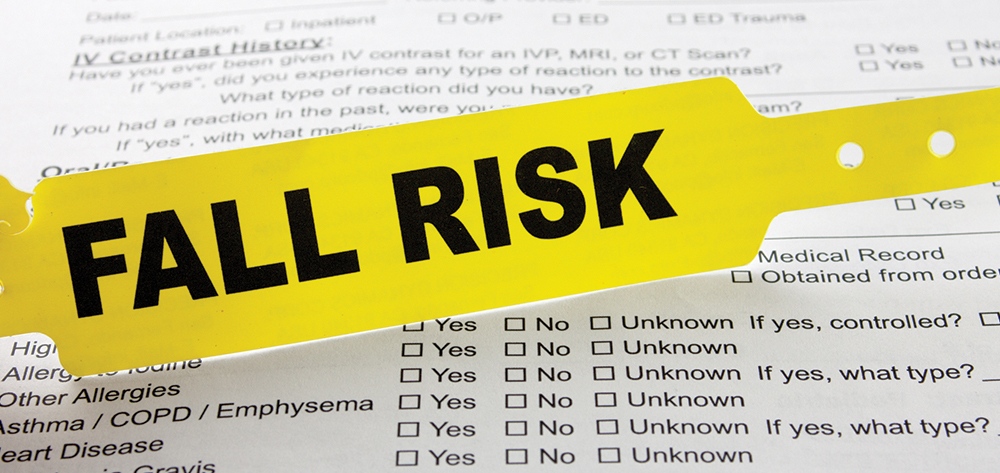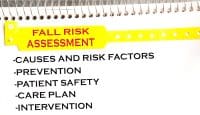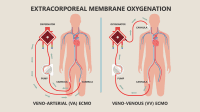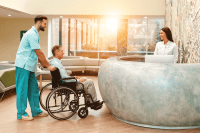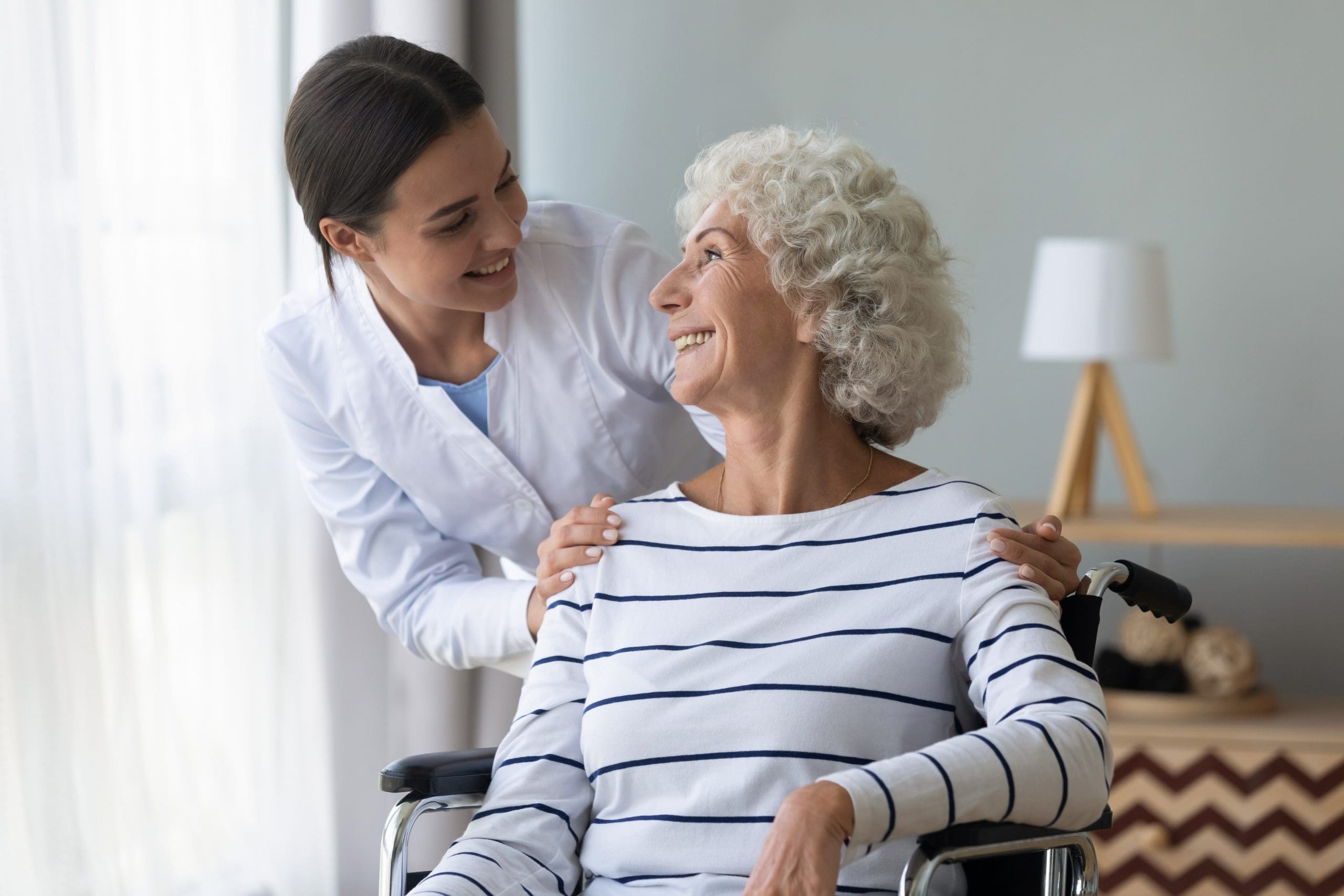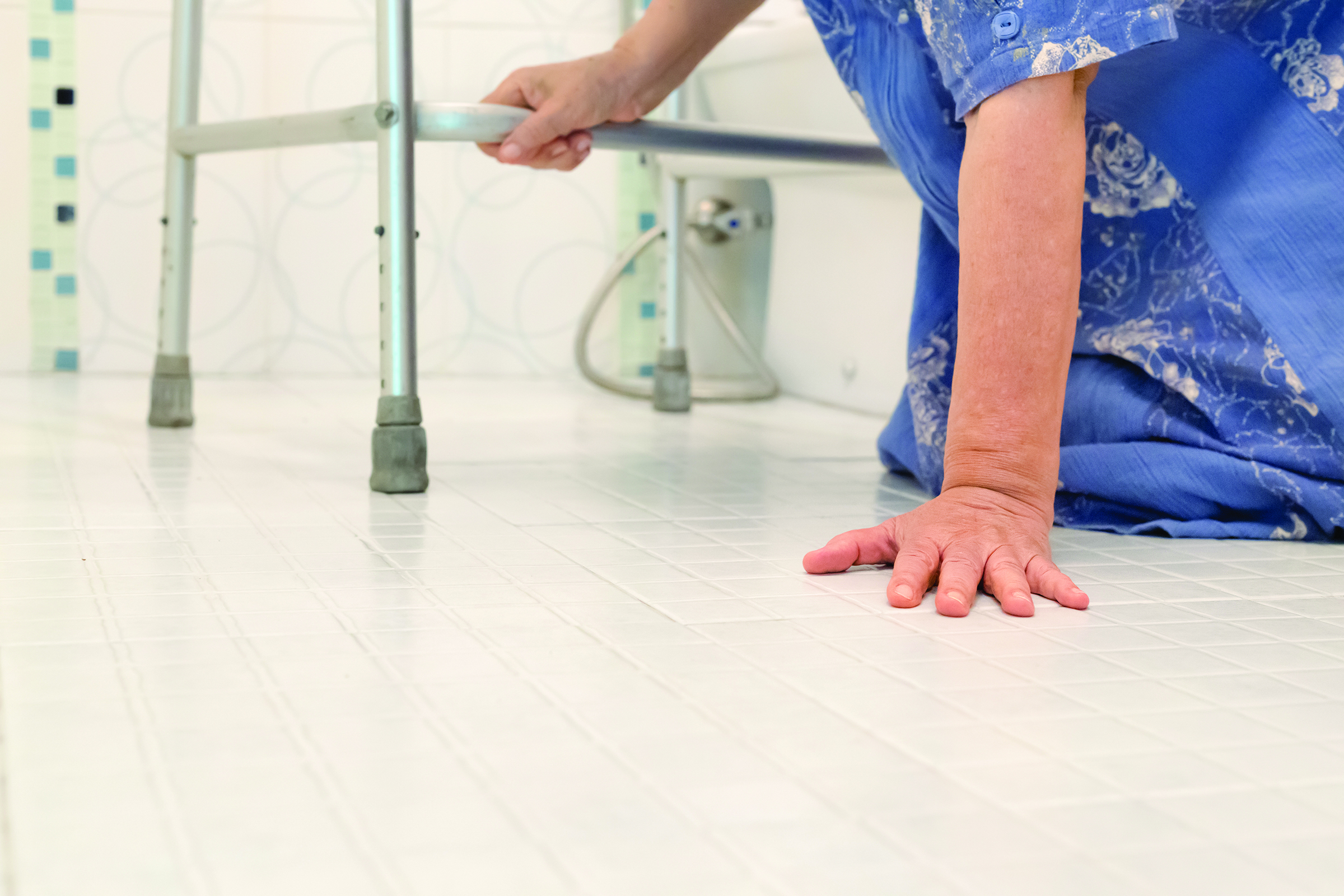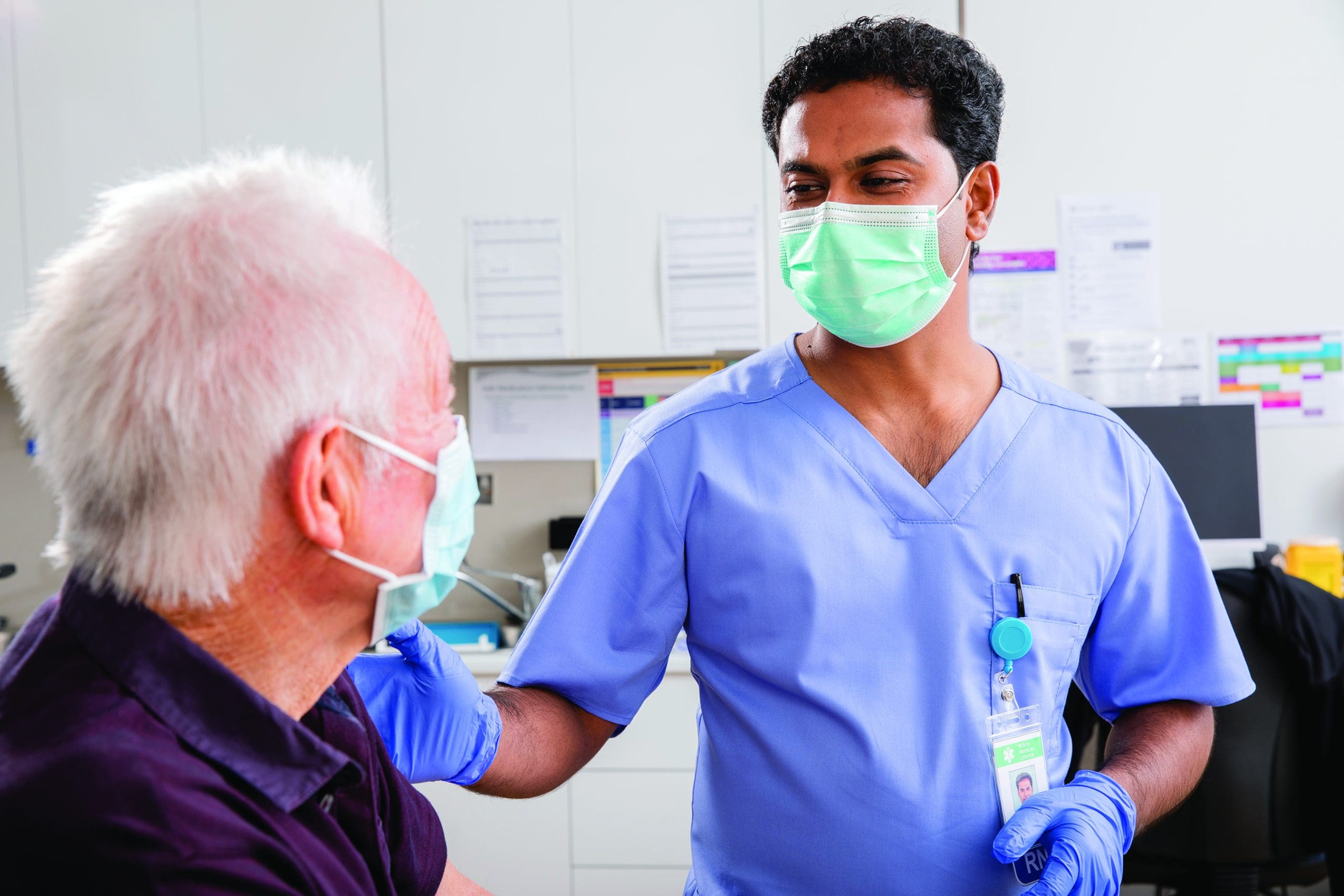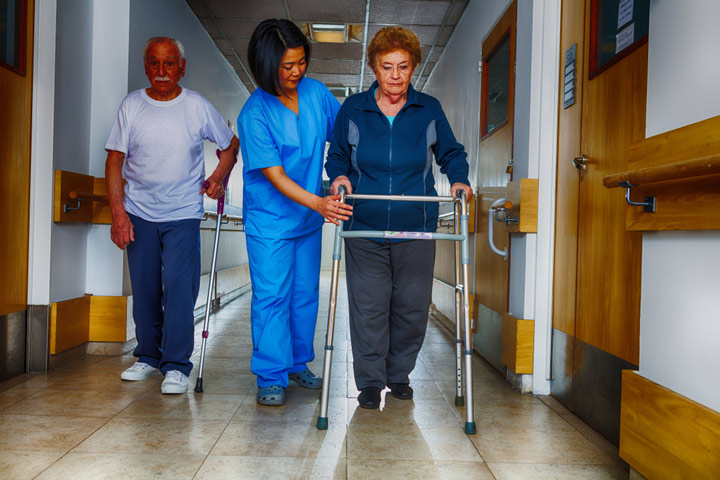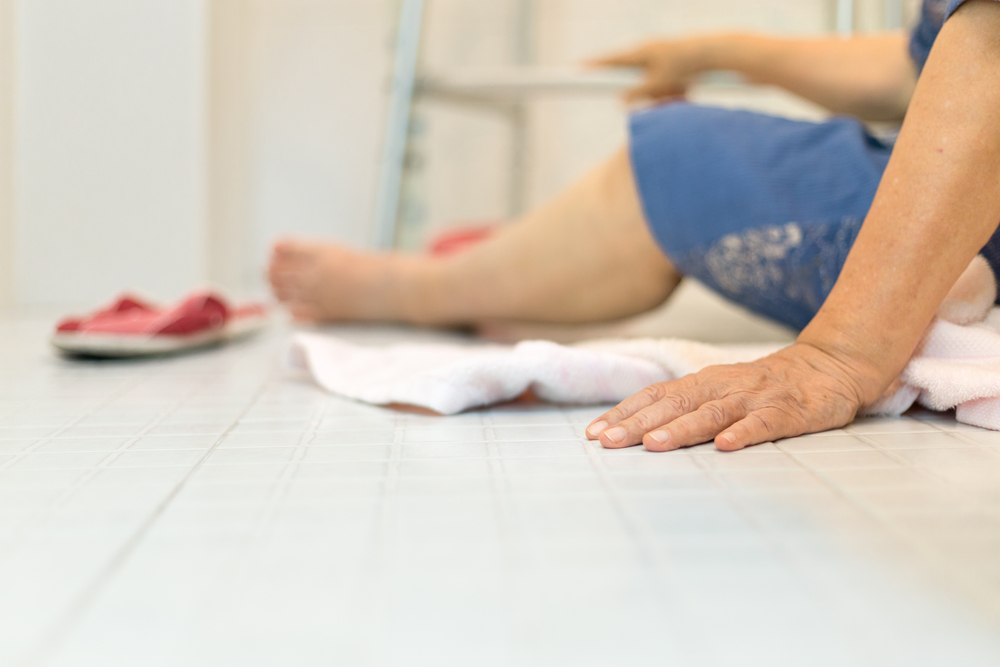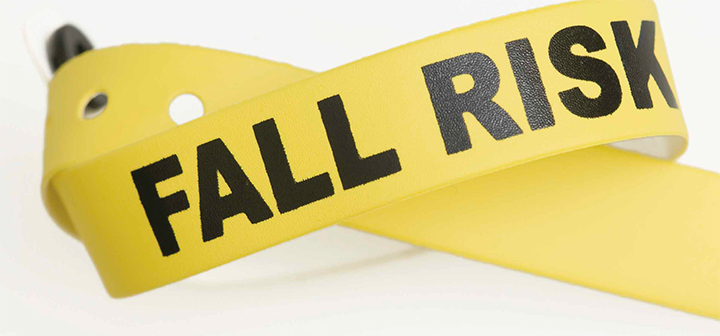Falls result from an unsafe environment or known risk factors that haven’t been addressed. Although most patient falls are preventable, falls are the top-reported adverse events in hospitals. A leading cause of injury in adults aged 65 and older, falls are the number-one cause of unintentional injury deaths in persons aged 85 and older. In 2010, 45% of the U.S. inpatient hospital population was aged 65 and older. Among these patients, 19% were ages 75 to 84, and 9% were ages 85 and older.
Obviously, preventing falls is a high patient-safety priority. As a nurse, your knowledge, skills, and expertise are vital to protecting patients from falls and preventing or minimizing injuries caused by falls. Changing our practices and focusing on reversible risk factors can make a big difference.
However, while preventing a fall avoids patient harm, not all falls can be prevented. Protecting patients from falls and resulting injuries requires a population-based approach. That means we can’t assume all patients have the same fall risk. As you reexamine your approach to core interventions for falls prevention and surveillance, consider the following do’s and don’ts.
Fall risk assessment
DO design and implement an individualized plan of care for preventing falls. Screen patients for risk factors using a valid and reliable risk tool. Follow up with comprehensive nursing and interdisciplinary assessment (such as medical record review, fall and injury history, and cognitive, physical, and function evaluation) and care planning based on fall and injury risk factors.
DO use a team approach. Strong, sustained evidence supports falls prevention based on an interdisciplinary, multifactorial approach to assessment, intervention, and evaluation.
DO evaluate the types of risk factors found. Some individual fall risk factors can be modified; with others, the patient and family or home caregiver must learn to compensate. Defined fall risk factors serve as the patient’s “diagnosis list.” For each fall risk factor, list specific interventions linked directly to the risk. Then engage the patient and family or home caregiver in care planning.
DO schedule time with the patient and family to review results of the nursing and interdisciplinary fall risk assessment and defined fall risk factors. Besides engaging them, this educates them about why the patient is at risk for falls and about interventions to mitigate, eliminate, or compensate for each risk factor.
DO provide time for patients to discuss their concerns about falling, identify fall risk factors not on the list, confirm their understanding of their risk factors and interventions, and ask if they have concerns or questions. Make sure all communications with the patient, nurse colleagues, and other team members address actual fall risk, not the level of fall risk or a score.
DON’T simply tell a patient he or she is at risk for falls, apply an armband, post a no-falls sign, and report to the next shift that a patient is a high fall risk. These actions alone are inadequate.
DON’T rely only on universal fall precautions. Although these standard strategies help create a safe environment that reduces accidental falls and delineates core preventive measures for all patients, each patient has a unique fall risk based on individual assessment. No evidence supports implementing universal fall precautions alone as the key best practice for reducing fall risk. You must evaluate interventions listed in universal fall precautions for each patient. For instance, not all patients should be placed in a low bed. (See When to use a low bed.)
Proper footwear
Nonskid socks are meant to prevent the feet from sliding. They’re used in many clinical settings, probably because going barefoot or wearing standard socks is linked to a much higher fall risk. However, Chari et al. compared slip resistance during mobilization, incline, and descent in patients with bare feet to patients wearing nonskid socks or compression stockings. They found bare feet provide better slip resistance than nonskid socks during mobilization and incline.
DO have patients wear proper footwear. Use nonskid socks to prevent from the feet
sliding upon standing. However, for ambulation, encourage patients to wear appropriate, well-fitting shoes—not nonskid socks.
DO teach patients, families, and home caregivers about footwear recommendations, because financial and comfort aspects are likely to outweigh safety considerations for older patients’ footwear.
DON’T put nonskid socks on a patient with a shuffling gait or on a foot with foot drop (impaired dorsiflexion).
Fall surveillance methods
Surveillance systems enable staff to monitor patients before a fall through direct or indirect observation or notification.
DO observe. Rounding allows direct visual observation; cameras provide remote observation. Alarm features on beds and chairs also provide notification. Many hospitals use movement alarms, although evidence on their effectiveness is still emerging.
DO measure the effectiveness of fall surveillance by timeliness of response to a patient’s attempts to get up without assistance—not by reduction of overall fall rates.
Bed alarms
Bed alarms act as early-warning systems to alert nursing staff that a patient is starting to get up from bed without assistance. They’re designed to promote timely rescue, not to prevent falls from bed. Shorr et al. found no statistical difference in fall reduction between units with bed alarms and control units. Bed alarms may even cause harm stemming from false alarms, alarm fatigue, and placing alarms on the wrong patient, so they must be used appropriately. Also, we need more research on bed alarms, in addition to well-designed evaluation of their implementation and effectiveness.
DO consider using bed alarms for patients who are unable to use the call light to call for help, fail teach-back strategies, can’t participate in fall-prevention care, or are mobile enough to get up from bed. However, evaluate whether sound from the alarm may cause more harm than benefit.
DO orient patients and family members to the alarm sound, how it’s triggered, and alarm alternatives that could agitate or scare the patient. Alternatives include alarms with voice-over recordings by a family member, integration into a call light or smartphone app to eliminate alarm sounds, and real-time surveillance camera technology that is alarm free but features continuous observation.
DON’T place bed alarms on patients who are immobile, unable to get out of bed, or deemed at high fall risk based on assessment or fall risk score.
DON’T assume one type of alarm technology works for all patients.
Nurses can lead interdisciplinary efforts
As nurses, we must advance falls-prevention practices beyond universal fall precautions based on each patient’s score or a level of risk. Use your clinical judgment and expertise when selecting core interventions to protect patients from falling.
As nurses, we’re called on to lead nursing and interdisciplinary approaches that individualize plans of care based on actual fall and injury risk factors. Doing this requires nursing leadership within an interdisciplinary approach to care.
Selected references
Agency for Healthcare Research and Quality (AHRQ). Preventing falls in hospitals: A
toolkit for improving quality of care. January 2013. ahrq.gov/professionals/systems/
hospital/fallpxtoolkit/index.html
Cameron ID, Gillespie LD, Robertson MC, et al. Interventions for preventing falls in older people in care facilities and hospitals. Cochrane Database Syst Rev. 2012;12: CD005465.
Chari S, Haines T, Varghese P, Economidis A. Are non-slip socks really ‘non-slip’? An analysis of slip resistance. BMC Geriatr. 2009 Aug;(9):39.
Degelau J, Belz M, Bungum L, et al.; Institute for Clinical Systems Improvement (ICSI). Prevention of falls (acute care). Health care protocol. 3rd ed. Bloomington, MN: ICSI; 2012. icsi.org/_asset/dcn15z/Falls-Interactive0412.pdf
Dykes PC, Carroll DL, Hurley A, et al. Fall prevention in acute care hospitals: a randomized control trial. JAMA. 2010;304(17): 1912-8.
Haines TP, Bell RA, Varghese PN. Pragmatic, cluster randomised trial of a policy to introduce low-low beds to hospital wards for the prevention of falls and fall injuries. J Am Geriatr Soc. 2010;58(3):435-41.
Koespell TD, Wolf ME, Buchner DM, et al. Footwear style and risk of falls in older adults. J Am Geriatr Soc. 2004;52(9):1495-501.
Levant S, Chari K, DeFrances CJ. Hospitalizations for patients aged 85 and over in the United States, 2000-2010. NCHS Data Brief. 2015 Jan;(182):1-8.
Menant JC, Steele JR, Menz HB, Munro BJ, Lord SR. Optimizing footwear for older people at risk of falls. J Rehabil Res Dev. 2008;45(8):1167-81.
National Quality Forum. Serious Reportable Events in Healthcare—2011 Update: A Consensus Report. Washington, DC: National Quality Forum; 2011. qualityforum.org/
Publications/2011/12/Serious_Reportable_Events_in_Healthcare_2011.aspx
Shever LL, Titler MG, Mackin ML, Kueny A. Fall prevention practices in adult medical-surgical nursing units described by nurse managers. West J Nurs Res. 2011;33(3):385-97.
Shorr RI, Chandler AM, Mion LC, et al. Effects of an intervention to increase bed alarm use to prevent falls in hospitalized patients; a cluster randomized trial. Ann Intern Med. 2012;157(10):692-9.
Spoelstra SL, Given BA, Given CW. Fall prevention in hospitals: an integrative review. Clin Nurs Res. 2012;21(1):92-112.
Patricia Quigley is associate director for the VISN 8 Patient Safety Center of Inquiry at the James A. Haley Veterans’ Hospital in Tampa, Florida.

